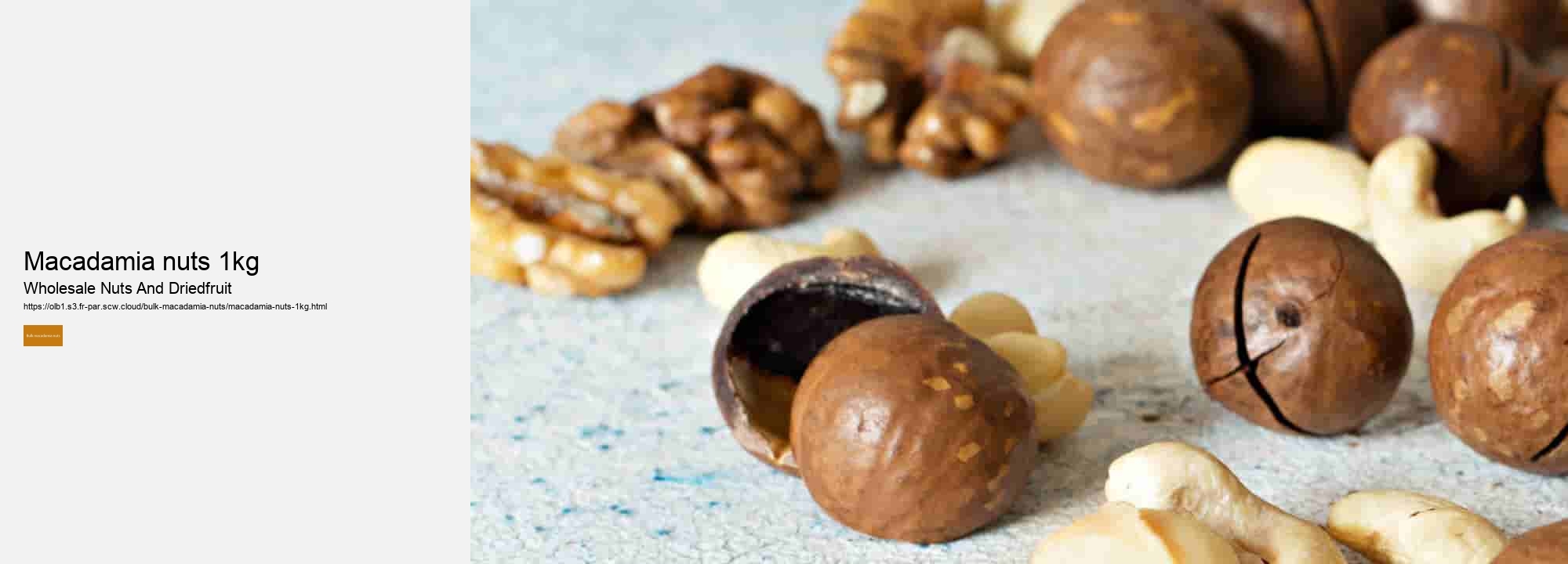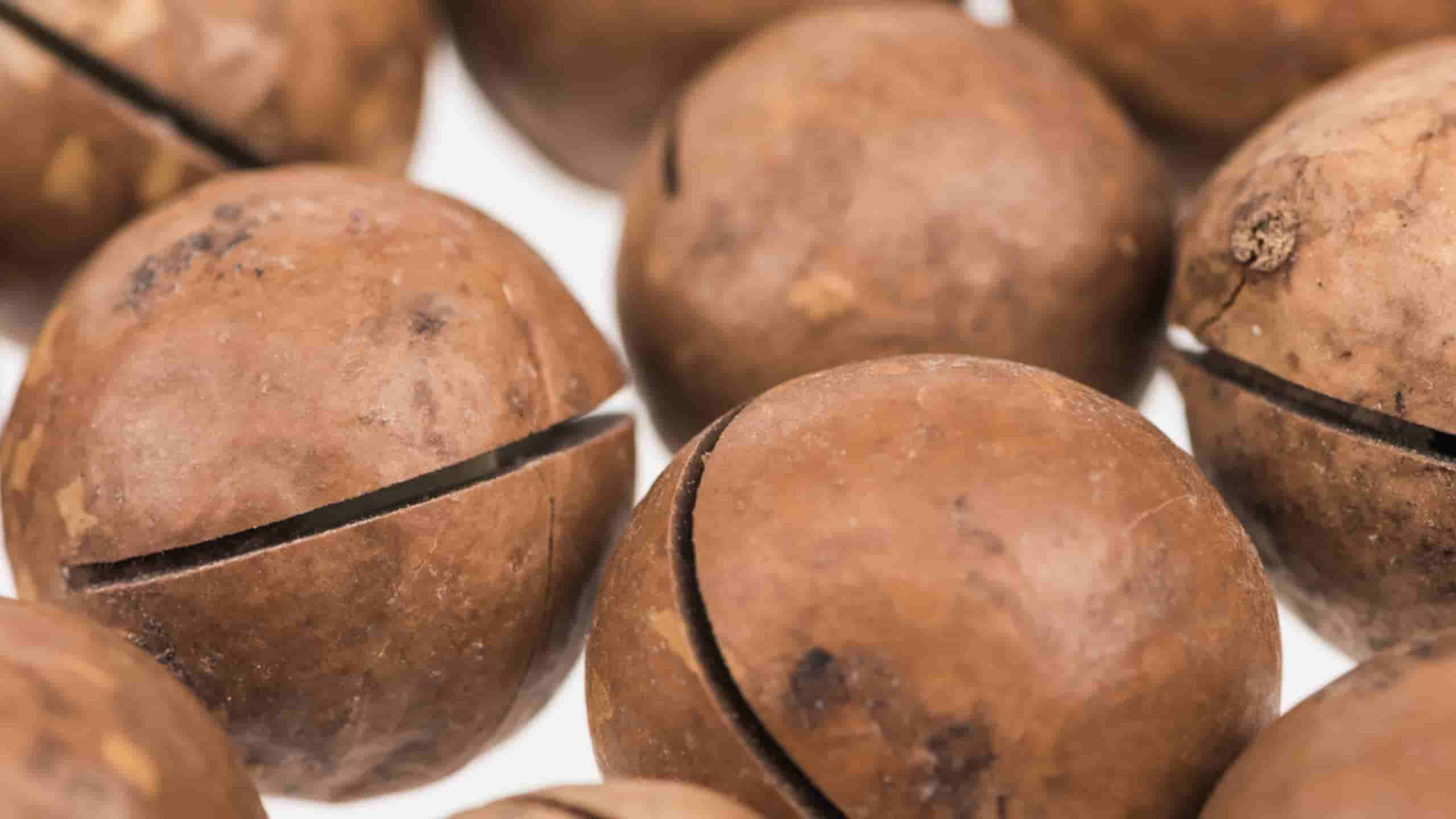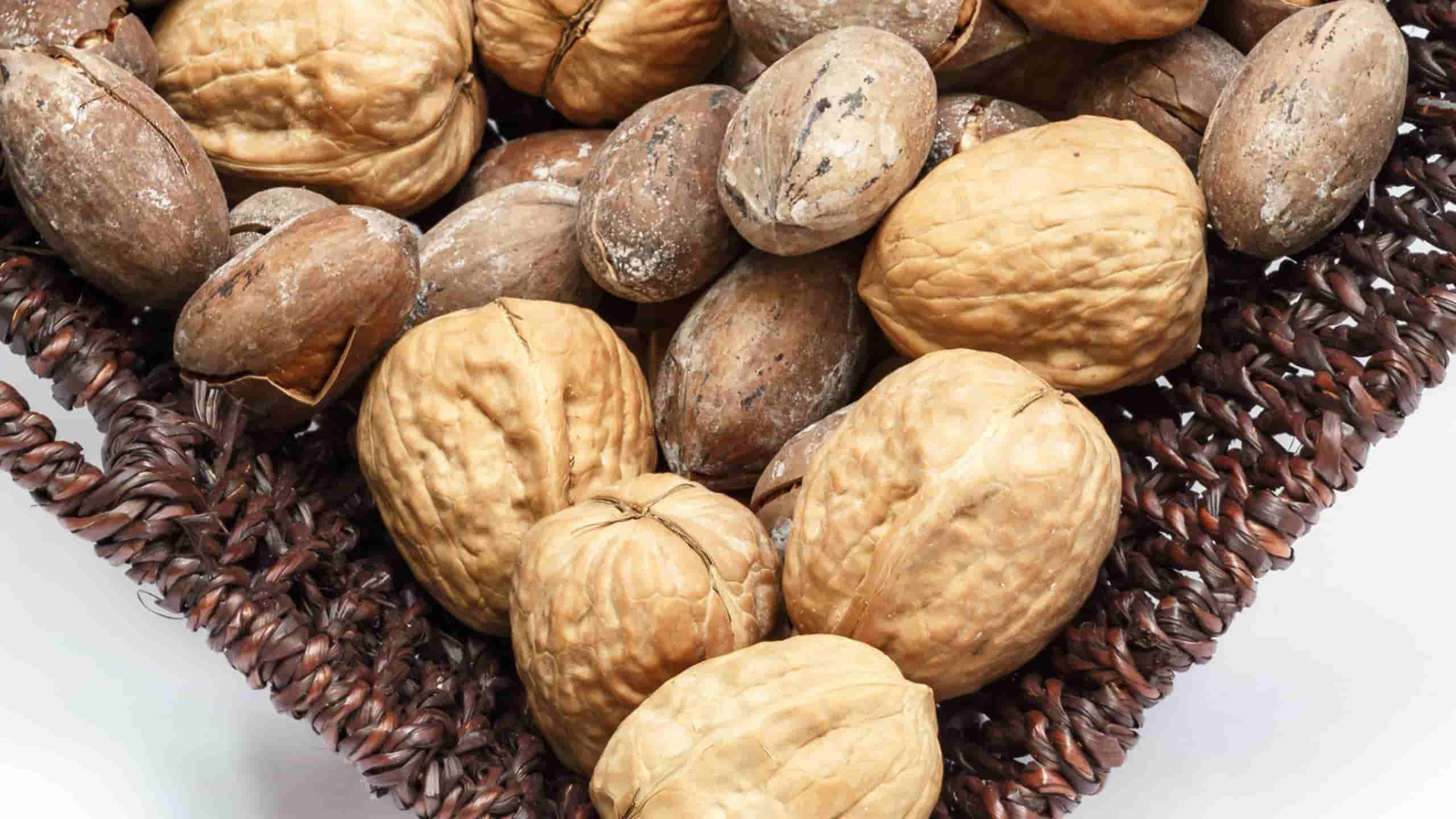

Roasting is perhaps one of the most important steps in the entire process, as it not only enhances the flavor of the nuts but also helps to improve their shelf life. The nuts are carefully placed in a roasting machine where they are heated at just the right temperature for the perfect amount of time. This step requires precision and attention to detail to ensure that each nut is roasted to perfection. After roasting, the nuts are left to cool before being packaged and shipped off to eager consumers around the world. The end result is a delicious and nutritious snack that can be enjoyed on its own or used in a variety of culinary creations.
But for those who are passionate about producing high-quality products, it is a rewarding endeavor that brings joy to both producers and consumers alike. Different ways to use bulk macadamia nuts in cooking and bakingMacadamia nuts are a delicious and versatile ingredient that can be used in a variety of ways in cooking and baking. Their rich, buttery flavor and crunchy texture make them a perfect addition to both sweet and savory dishes. Here are some different ways you can use bulk macadamia nuts in your culinary creations.
Roasting brings out the natural oils in the nuts and enhances their flavor, making them even more delicious. You can also add roasted macadamia nuts to trail mixes or granola for a tasty and nutritious snack. In baking, macadamia nuts can be chopped up and added to cookies, brownies, muffins, and breads for an extra layer of crunch and flavor. They pair particularly well with white chocolate or coconut flavors, adding a tropical twist to your baked goods.
Try incorporating chopped macadamia nuts into your favorite banana bread recipe for a decadent treat. For savory dishes, macadamia nuts can be used as a crust for fish or chicken, giving your protein a crunchy coating that is sure to impress. You can also add chopped macadamia nuts to salads or stir-fries for an unexpected burst of flavor and texture. If you're feeling adventurous, you can even try making your own homemade macadamia nut butter by blending roasted nuts with a bit of oil until smooth. This creamy spread is perfect for spreading on toast or adding to smoothies for an extra boost of protein.
So go ahead and get creative with this versatile ingredient – the possibilities are endless! Comparing the nutritional value of bulk macadamia nuts to other types of nutsWhen it comes to snacking, nuts are a popular choice for many people due to their convenience and health benefits. Macadamia nuts, in particular, have gained popularity in recent years for their rich, buttery flavor and unique nutritional profile. Compared to other types of nuts, such as almonds, walnuts, and cashews, macadamia nuts stand out for their high content of monounsaturated fats.
In fact, macadamia nuts are one of the richest sources of monounsaturated fats among all nuts. In addition to their heart-healthy fats, macadamia nuts are also a good source of fiber, protein, and antioxidants. Fiber is important for digestive health and can help keep you feeling full and satisfied between meals. Protein is essential for muscle repair and growth, making macadamia nuts a great post-workout snack option.
While macadamia nuts are nutrient-dense, they are also calorie-dense compared to other types of nuts. This means that you should enjoy them in moderation if you are watching your weight or trying to maintain a healthy diet. It's best to stick to a small handful (about 1 ounce) per serving to avoid consuming too many calories. In conclusion, when comparing the nutritional value of bulk macadamia nuts to other types of nuts, it's clear that they offer unique health benefits thanks to their high content of monounsaturated fats, fiber, protein, and antioxidants.
However, it's important to enjoy them in moderation due to their calorie density. Incorporating a variety of nuts into your diet can provide a range of nutrients and flavors while supporting overall health and well-being. The history and origins of macadamia nuts as a popular snack foodMacadamia nuts have a long and fascinating history as a popular snack food. These delicious, buttery nuts are native to Australia, specifically the rainforests of Queensland and New South Wales.
The first recorded mention of macadamia nuts in Western literature dates back to the late 19th century when they were discovered by European settlers. The nuts were named after John Macadam, a scientist who played a key role in introducing them to the wider world. Macadamia trees were soon cultivated in Hawaii and other tropical regions, leading to the widespread popularity of these tasty treats.

In recent decades, macadamia nuts have become increasingly popular as a snack food due to their unique taste and numerous health benefits. They are high in monounsaturated fats, which are known to be good for heart health, as well as fiber, antioxidants, and essential nutrients like magnesium and vitamin B6. Today, macadamia nuts can be found in grocery stores around the world, roasted or raw, salted or unsalted. They are enjoyed on their own as a satisfying snack or used in various recipes, from salads to desserts. Their versatility and distinctive flavor make them a favorite among nut lovers everywhere. In conclusion, the history and origins of macadamia nuts as a popular snack food are intertwined with centuries of tradition and cultural significance.
Sustainable farming practices for producing bulk macadamia nutsSustainable farming practices play a crucial role in the production of bulk macadamia nuts. Macadamia nuts are not only a popular snack but also widely used in various culinary dishes and products. As the demand for these delicious nuts continues to rise, it is essential for farmers to adopt sustainable practices to ensure long-term productivity and environmental conservation. One of the key aspects of sustainable farming practices for producing bulk macadamia nuts is soil health management. Healthy soils are vital for the growth and development of macadamia trees, as they provide essential nutrients and support root growth.
These practices help maintain soil structure, prevent erosion, and reduce the need for chemical inputs. Water management is another critical component of sustainable macadamia nut farming. Macadamia trees require adequate water to thrive, but excessive irrigation can lead to water wastage and environmental degradation. By implementing efficient irrigation systems such as drip irrigation or mulching techniques, farmers can conserve water resources while ensuring optimal tree growth and nut production. Integrated pest management (IPM) is also essential in sustainable macadamia nut farming.
This approach helps minimize the negative impact of pesticides on beneficial insects, soil health, and human health while maintaining a healthy ecosystem within the farm. Furthermore, biodiversity conservation plays a significant role in sustainable macadamia nut production. By planting native trees, creating wildlife habitats, and preserving natural ecosystems within their farms, farmers can promote biodiversity and enhance ecological resilience. This not only benefits local flora and fauna but also improves pollination services and overall farm productivity. In conclusion, sustainable farming practices are essential for producing bulk macadamia nuts ethically and responsibly.
By prioritizing soil health management, water efficiency, integrated pest management, and biodiversity conservation, farmers can ensure a thriving agricultural system that benefits both people and the planet. As consumers increasingly demand sustainably produced food products like macadamia nuts, it is crucial for farmers to embrace these practices to meet market demands while safeguarding our environment for future generations. Creating homemade nut mixes using bulk macadamia nutsWhen it comes to creating delicious homemade nut mixes, using bulk macadamia nuts can take your snack game to the next level. Macadamia nuts are known for their rich and buttery flavor, making them a perfect addition to any nut mix.
This may include a variety of nuts such as almonds, cashews, and pistachios, as well as dried fruits like cranberries or raisins. You'll also need a large mixing bowl, measuring cups, and storage containers for your finished product. Once you have everything ready, it's time to get creative with your mix!
From there, add in equal parts of your other nuts and dried fruits until you reach the desired ratio of ingredients. Don't be afraid to experiment with different combinations and flavors. You could try adding some spices like cinnamon or nutmeg for an extra kick, or even drizzle some honey or maple syrup over the mix before baking it in the oven for a sweet treat.
These homemade nut mixes make for great snacks on-the-go or tasty additions to salads and yogurt bowls. By creating your own nut mixes using bulk macadamia nuts, you can customize the flavors to suit your taste preferences while also reaping the health benefits of these nutrient-dense nuts. So why not get creative in the kitchen today and whip up a batch of delicious homemade nut mix?

Your taste buds will thank you!
What is the best way to store bulk macadamia nuts? When it comes to storing bulk macadamia nuts, there are a few key factors to keep in mind in order to maintain their freshness and quality for as long as possible. Macadamia nuts are known for their rich flavor and buttery texture, making them a popular choice for snacking or adding to recipes. To ensure that your bulk supply of macadamia nuts stays fresh and delicious, proper storage is essential. The best way to store bulk macadamia nuts is in an airtight container in a cool, dry place. Airtight containers help prevent exposure to moisture, which can cause the nuts to become rancid or moldy.
It is also important to keep the macadamia nuts away from sources of heat and light, as these can accelerate the deterioration of the nuts. Avoid storing them near appliances that generate heat or in direct sunlight. Instead, choose a dark pantry or cupboard that remains at a consistent temperature. If you have purchased pre-packaged bulk macadamia nuts, it is best to transfer them to an airtight container once opened. This will help prolong their shelf life and maintain their freshness.
In addition to proper storage techniques, it is important to check your bulk supply of macadamia nuts regularly for any signs of spoilage. Discard any nuts that appear discolored, have an off smell, or taste stale. Fresh macadamia nuts should have a creamy white color with no blemishes or mold growth. By following these simple guidelines for storing bulk macadamia nuts, you can enjoy their delicious flavor and crunchy texture for months to come. Whether you snack on them straight out of the container or use them in your favorite recipes, properly stored macadamia nuts will always be a tasty treat worth savoring.
Macadamia nuts are a delicious and nutritious snack that can be enjoyed on their own or used in a variety of recipes. These nuts are not only tasty, but they also offer a range of health benefits due to their impressive nutritional profile. When it comes to macadamia nuts, one of the most notable characteristics is their high fat content. While some may shy away from foods high in fat, it's important to note that the majority of the fats found in macadamia nuts are monounsaturated fats, which are considered heart-healthy fats. These fats can help reduce "bad" LDL cholesterol levels and lower the risk of heart disease.

Macadamia nuts can be used in various culinary applications, including baking, cooking, and as an ingredient in salads, granola, trail mixes, and desserts like cookies and cakes.
Macadamia nuts are creamy, rich-flavored nuts harvested from the macadamia tree, native to Australia.
Macadamia nuts are high in healthy fats, particularly monounsaturated fats, and are also a good source of fiber, protein, and various vitamins and minerals like manganese and thiamine.